A head-to-toe assessment is a comprehensive physical evaluation method used by nurses to gather patient data, determine health status, and guide care planning in various healthcare settings.
1.1 Definition and Purpose
A head-to-toe assessment is a systematic, comprehensive physical evaluation method used by nurses to gather detailed patient data. Its primary purpose is to identify the patient’s health status, detect potential or existing health issues, and monitor changes over time. This assessment involves examining all body systems, from the head to the toes, using observation, palpation, percussion, and auscultation. It serves as a foundation for developing individualized care plans, prioritizing interventions, and evaluating treatment effectiveness. Regular head-to-toe assessments are essential for maintaining continuity of care and ensuring patient safety in diverse healthcare settings.
1.2 Importance in Nursing Practice
A head-to-toe assessment is a cornerstone of nursing practice, ensuring a thorough evaluation of a patient’s physical and functional status. It enables early detection of potential health issues, allowing for timely interventions. By systematically examining all body systems, nurses can identify abnormalities, monitor changes, and prioritize care. This assessment is vital for developing personalized care plans, reducing complications, and improving patient outcomes. It also enhances communication among healthcare teams and ensures continuity of care. Regular head-to-toe assessments are critical for maintaining patient safety, promoting holistic care, and meeting the dynamic needs of diverse patient populations in various healthcare settings.

Components of a Comprehensive Head-to-Toe Assessment
A head-to-toe assessment includes a general survey, physical examination techniques, and evaluation of body systems to ensure a thorough and systematic patient evaluation.
2.1 General Survey
A general survey is the initial step in a head-to-toe assessment, involving observation of the patient’s overall appearance, level of consciousness, and mobility. Nurses assess vital signs such as temperature, pulse, and blood pressure to identify baseline health status. This step also includes evaluating the patient’s hygiene, nutrition, and emotional state. The general survey provides a holistic view, helping nurses identify potential health issues and prioritize further assessment. It is crucial for guiding the rest of the physical examination and ensuring a systematic approach to patient care. This step sets the foundation for a comprehensive evaluation.
2.2 Physical Examination Techniques
Physical examination techniques in a head-to-toe assessment include inspection, palpation, percussion, and auscultation. Inspection involves observing body parts for abnormalities, such as swelling or discoloration. Palpation uses touch to assess tenderness, masses, or organ enlargement. Percussion involves tapping to check organ sounds and detect abnormalities like fluid retention. Auscultation uses a stethoscope to listen to heart, lung, and bowel sounds. These techniques provide objective data, guiding the nurse to identify deviations from normal findings. Proper use of these methods ensures a thorough and systematic evaluation, enabling accurate documentation and effective patient care planning. Each technique is essential for a comprehensive assessment.
2.3 Body Systems Assessment
A body systems assessment involves evaluating each system to identify deviations from normal function. The cardiovascular system is assessed by listening to heart sounds and checking blood pressure. The respiratory system is evaluated through lung sounds and breathing patterns. The neurological system is examined by testing reflexes, muscle strength, and sensory function. The gastrointestinal system is assessed by auscultating bowel sounds and palpating for tenderness. The musculoskeletal system is evaluated by checking range of motion and muscle strength. Each system is systematically reviewed to ensure comprehensive data collection, aiding in accurate diagnosis and targeted care planning.
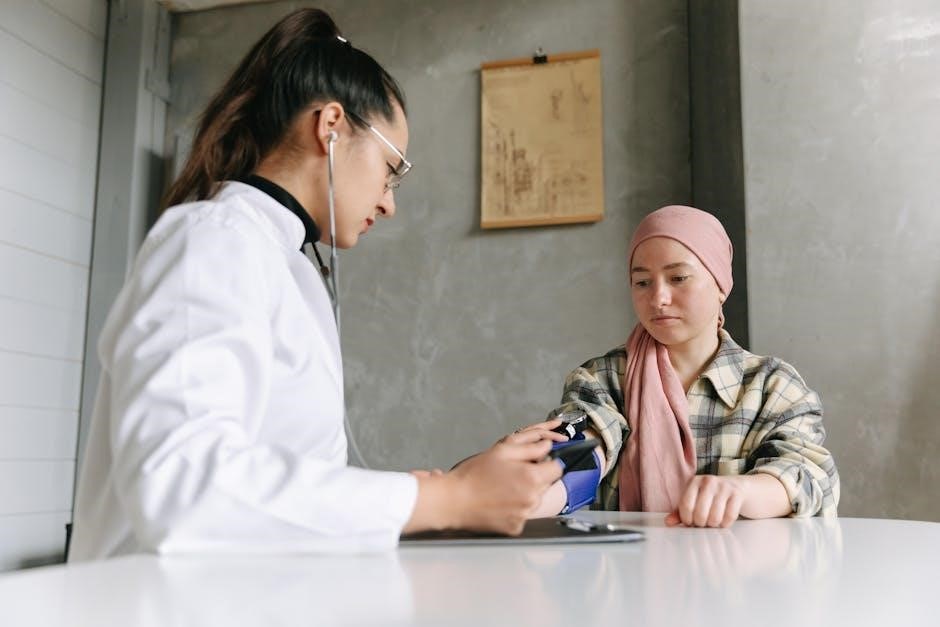
Preparation for the Assessment
- Gather necessary tools like stethoscope, blood pressure cuff, and thermometer.
- Ensure patient comfort, privacy, and a quiet environment.
- Obtain informed consent for the assessment process.
3.1 Gathering Necessary Tools and Equipment
Gathering the right tools and equipment is essential for a thorough head-to-toe assessment. Common tools include a stethoscope, blood pressure cuff, thermometer, penlight, and pulse oximeter. Ensure all equipment is clean and functioning properly. Additionally, having a clipboard or electronic device for documentation is crucial. Organize supplies in a systematic order to streamline the assessment process. This preparation ensures efficiency and accuracy when evaluating the patient’s health status. Always verify the availability of specialized tools based on the patient’s specific needs or medical conditions. Proper equipment preparation enhances the effectiveness of the assessment and supports comprehensive patient care.
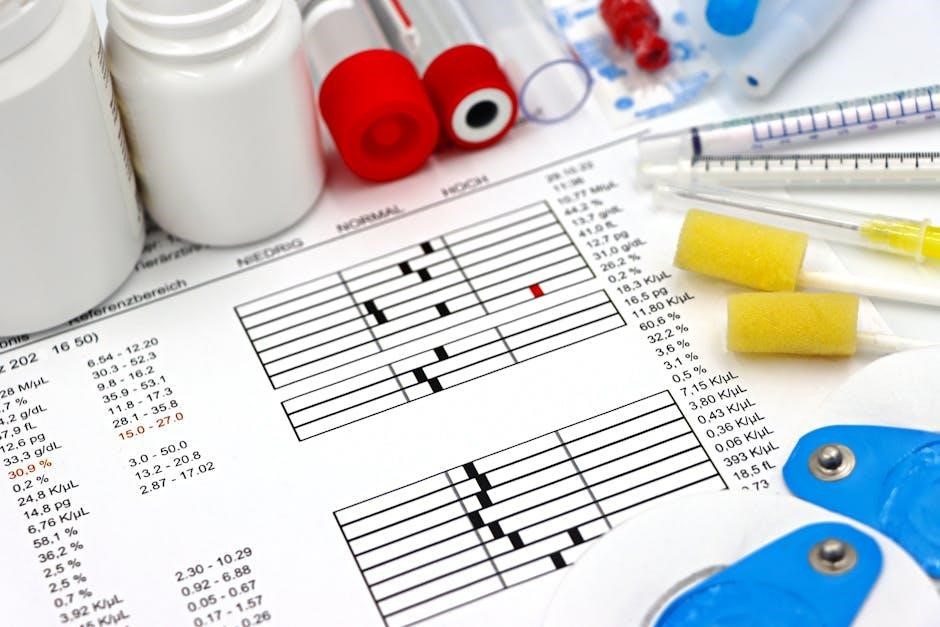
3.2 Ensuring Patient Comfort and Privacy
Ensuring patient comfort and privacy is vital during a head-to-toe assessment. Create a calm environment by dimming lights and minimizing interruptions. Explain the assessment process to reduce anxiety and foster cooperation. Position the patient appropriately for each examination, using drapes or gowns to maintain dignity. Respect cultural and personal preferences, such as modesty concerns; Ensure the room is at a comfortable temperature and provide opportunities for the patient to ask questions. By prioritizing comfort and privacy, nurses build trust and ensure a more accurate and effective assessment. This approach also promotes patient-centered care and respect for individual needs.
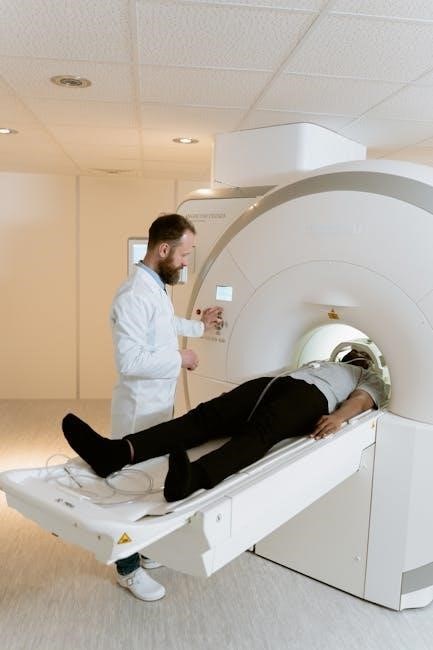
3.4 Obtaining Patient Consent
Obtaining patient consent is a critical step in conducting a head-to-toe assessment. Nurses must ensure that patients understand the purpose, procedure, and potential outcomes of the assessment. Consent must be voluntary, informed, and documented. Patients should be provided with clear, concise information about what the assessment entails. This includes explaining the benefits and any potential discomfort they may experience. If the patient is unable to provide consent due to incapacity, legal guardians or family members may act on their behalf. Ensuring consent respects patient autonomy and adheres to ethical and legal standards in healthcare. Proper documentation of consent is essential for accountability and transparency.

Conducting the Head-to-Toe Assessment
A head-to-toe assessment involves a systematic evaluation of body systems, using techniques like inspection, palpation, and auscultation, to gather comprehensive data on the patient’s physical condition.
4.1 Assessment of the Head and Neck
The head and neck assessment begins with inspecting for injuries, deformities, or asymmetries. Palpate the scalp for tenderness or masses, and examine the hair for texture and distribution. Check the face for symmetry and signs of edema or trauma. Inspect the eyes, ears, nose, and throat for abnormalities, such as redness, discharge, or swelling. Assess the neck for range of motion, lymph node enlargement, or thyroid abnormalities. Use techniques like the Snellen chart for vision testing or the Weber and Rinne tests for hearing. Evaluate cranial nerve function to ensure neurological integrity. Document findings to guide further care and interventions.
4.2 Examination of the Eyes, Ears, Nose, and Throat
Examine the eyes for redness, discharge, or abnormal pupil reactions using a penlight. Test visual acuity with a Snellen chart and check for nystagmus. Inspect the ears for wax buildup or redness, and assess hearing with the Weber and Rinne tests. Examine the nose for congestion or discharge and palpate the sinuses for tenderness. Use a tongue depressor to inspect the throat for redness, swelling, or exudate. Assess the uvula for midline deviation and check the tonsils for enlargement. Note any unusual odors or breathing difficulties. Document findings to identify potential issues requiring further evaluation or specialty referral.
4.3 Inspection of the Skin and Nails
Inspect the skin for color, texture, hydration, and integrity, noting any lesions, rashes, or areas of redness. Assess for edema, jaundice, or cyanosis. Palpate the skin to check for temperature, moisture, and turgor. Examine nails for abnormalities such as thickening, discoloration, or clubbing. Note any signs of fungal infections or trauma. Document the presence of scars, tattoos, or other markings. Use a magnifying glass if necessary for a closer examination. Ensure to assess all body areas, including hard-to-see regions like the back. Record any patient-reported skin concerns or changes. This step helps identify potential health issues requiring further investigation or specialized care.
4.4 Assessment of the Cardiovascular System
Assess the cardiovascular system by auscultating heart sounds (S1, S2) and checking for murmurs, gallops, or irregular rhythms. Inspect for jugular venous distension (JVD) and measure blood pressure. Palpate peripheral pulses (radial, carotid, femoral, pedal) to evaluate strength, rhythm, and equality. Note any signs of peripheral edema or cool, pale, or cyanotic extremities. Assess capillary refill time (CRT) and check for nail capillary changes. Document any patient-reported chest pain, shortness of breath, or dizziness. Use a stethoscope to listen for bruits over major arteries (e.g., carotid, femoral) and assess for abdominal aortic aneurysms during abdominal examination. Record findings accurately to guide further diagnostic testing or interventions.
4.5 Evaluation of the Respiratory System
Evaluate the respiratory system by inspecting the chest for symmetry, expansion, and retractions. Assess respiratory rate, depth, and pattern, noting any abnormalities like tachypnea or dyspnea. Auscultate lung sounds bilaterally, identifying normal breath sounds, crackles, wheezes, or pleural rubs. Use percussion to assess for dullness or hyperresonance, indicating fluid or air accumulation. Palpate for fremitus vibrations and check for tracheal deviation. Measure oxygen saturation and observe for cyanosis or nasal flaring. Note any cough or sputum production and assess the patient’s ability to speak in full sentences. Document findings to identify respiratory issues and guide interventions.
4.6 Examination of the Abdomen
The abdominal examination involves a systematic approach to assess for potential issues. Begin with inspection, noting distension, scars, or visible masses. Auscultate for bowel sounds, listening for normal sounds, hyperactive, or absent patterns. Percuss to identify areas of dullness, which may indicate fluid or solid masses. Palpate gently, assessing for tenderness, guarding, or rebound pain. Check for liver and spleen enlargement using percussion and palpation techniques. Inspect for Hernias during coughing. Note any abnormalities, such as jaundice or caput medusae, and document findings thoroughly to guide further diagnostic steps and interventions.
4.7 Assessment of the Musculoskeletal System
The musculoskeletal assessment evaluates muscle strength, tone, and joint mobility. Begin with inspection, noting muscle atrophy, asymmetry, or deformities. Palpate muscles for tenderness or spasms and joints for swelling or warmth. Assess range of motion by having the patient move joints through their full range. Test muscle strength using a grading scale (0-5), with 5 indicating normal strength. Check for gait abnormalities during ambulation. Note any pain or limitations during movement. Document findings, including any red flags such as acute pain or limited mobility, to guide further interventions or referrals for specialized care.
4.8 Evaluation of the Neurological System
The neurological assessment evaluates the patient’s nervous system function. Begin by assessing the level of consciousness, including orientation, memory, and cognitive status. Test cranial nerves for function, such as vision, hearing, and facial symmetry. Evaluate motor function by assessing muscle strength, tone, and coordination. Check sensory response to touch, pain, and vibration. Perform reflex testing, including deep tendon reflexes. Observe gait and balance for abnormalities. Document any deficits, such as speech difficulties, weakness, or sensory loss. Note seizure history or neurological deficits. Red flags include altered mental status, loss of coordination, or unilateral weakness. Accurate documentation guides neurological interventions and referrals.
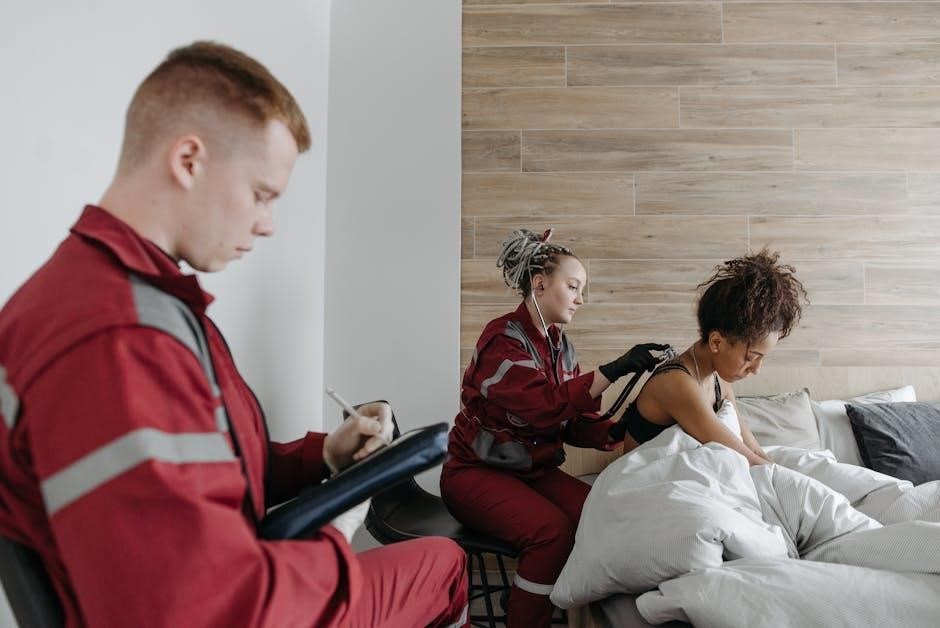
Documentation of Findings
Accurate documentation of assessment findings ensures clear communication of patient status. Use templates for consistency, recording objective and subjective data. Timely and precise documentation guides care planning and interventions.
5.1 Using a Head-to-Toe Assessment Template
A head-to-toe assessment template is a structured tool designed to guide nurses through comprehensive physical examinations. It typically includes sections for evaluating hair, skin, nails, and progresses through body systems, ending with a neurological assessment. Templates ensure consistency, thoroughness, and organization of data collection. They often provide checkboxes, notes, and spaces for documenting findings, making it easier to identify abnormalities. Using a template helps nurses systematically assess patients, ensuring no body part or system is overlooked. It also facilitates clear communication among healthcare providers and supports accurate documentation of patient status and care planning.
5.2 Recording Objective and Subjective Data
During a head-to-toe assessment, nurses record both objective and subjective data to provide a complete picture of the patient’s health. Objective data includes measurable observations, such as vital signs, physical examination findings, and diagnostic results, which are factual and unbiased. Subjective data involves patient-reported information, like pain, fatigue, or concerns, offering personal insights. Accurate documentation of both types ensures comprehensive care planning and clear communication among healthcare providers. This dual approach helps nurses identify patterns, detect potential issues, and prioritize interventions, ultimately improving patient outcomes and continuity of care. Proper recording also supports legal and professional standards in nursing practice.
5.3 Including Additional Notes and Concerns
Including additional notes and concerns during documentation ensures a holistic view of the patient’s condition. Nurses should note any unusual observations, patient anxieties, or environmental factors that may impact care. These notes provide context to the assessment findings and highlight subtle issues that may not be captured in standardized forms. For example, documenting a patient’s concern about pain or mobility can guide further interventions. Clear and concise language is essential to avoid ambiguity. These notes also serve as a communication tool for the healthcare team, ensuring continuity of care and addressing potential risks or areas requiring follow-up. This practice enhances patient safety and individualized care planning.

Special Considerations
Special considerations in head-to-toe assessments involve tailoring techniques for pediatric and geriatric patients, addressing cultural sensitivities, and ensuring ethical practice to accommodate diverse patient needs effectively.
6.1 Pediatric and Geriatric Assessments
Pediatric and geriatric assessments require tailored approaches to accommodate unique physiological and developmental needs. For pediatric patients, nurses should use age-appropriate communication, assess growth milestones, and consider parental involvement. Geriatric assessments focus on common issues like mobility challenges, sensory deficits, and chronic conditions. Techniques may need adjustment, such as slower pacing for geriatric patients or non-invasive methods for children. Special attention should be given to cognitive function in the elderly and developmental stages in children. Nurses must also be mindful of cultural and ethical considerations to ensure respectful and individualized care for these vulnerable populations.
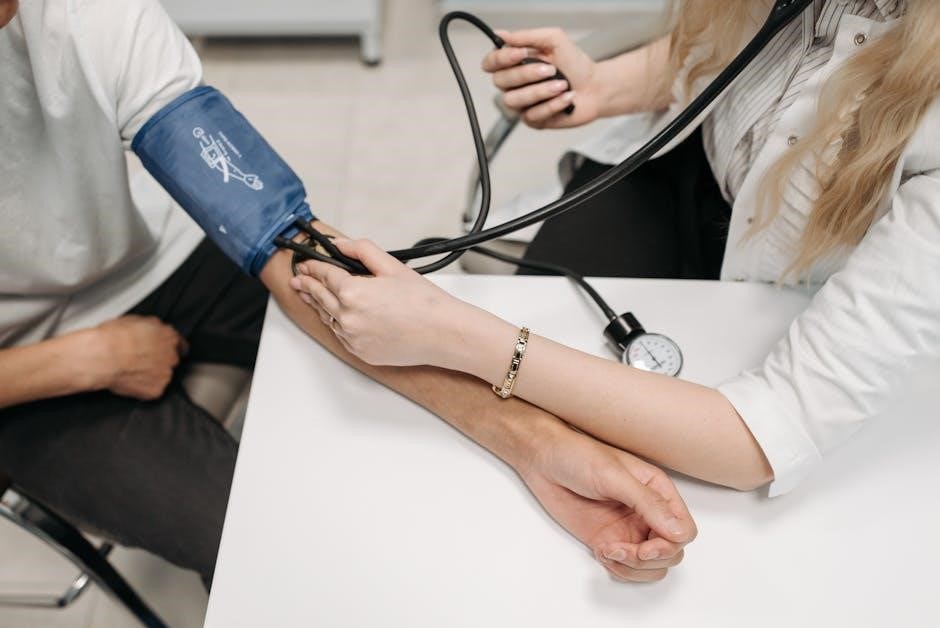
6.2 Cultural and Ethical Considerations
Cultural and ethical considerations are crucial in head-to-toe assessments to ensure respectful and person-centered care. Nurses must respect patients’ cultural beliefs, values, and practices, which may influence their health behaviors and preferences. Obtaining informed consent and maintaining patient privacy are ethical imperatives. Cultural sensitivity involves being aware of differences in communication styles, modesty expectations, and pain expression. Nurses should also be mindful of power dynamics and ensure patients feel comfortable and included in the assessment process. Upholding ethical standards fosters trust and promotes a positive healthcare experience for diverse patient populations.
A head-to-toe assessment is a vital nursing skill that ensures comprehensive patient evaluation, guiding care planning and promoting positive health outcomes through systematic and ethical practice.
7.1 Summary of Key Points
A head-to-toe assessment is a systematic method for evaluating patients’ physical and emotional health, ensuring comprehensive care. It involves observing overall appearance, vital signs, and each body system. Nurses use techniques like inspection, palpation, percussion, and auscultation to gather data. Documentation is crucial for continuity of care and legal purposes. Ethical considerations, such as patient consent and privacy, are essential. Regular practice and feedback improve assessment skills. Utilizing templates and checklists enhances accuracy and efficiency. This process is vital for identifying health issues, planning interventions, and promoting positive patient outcomes across all healthcare settings.
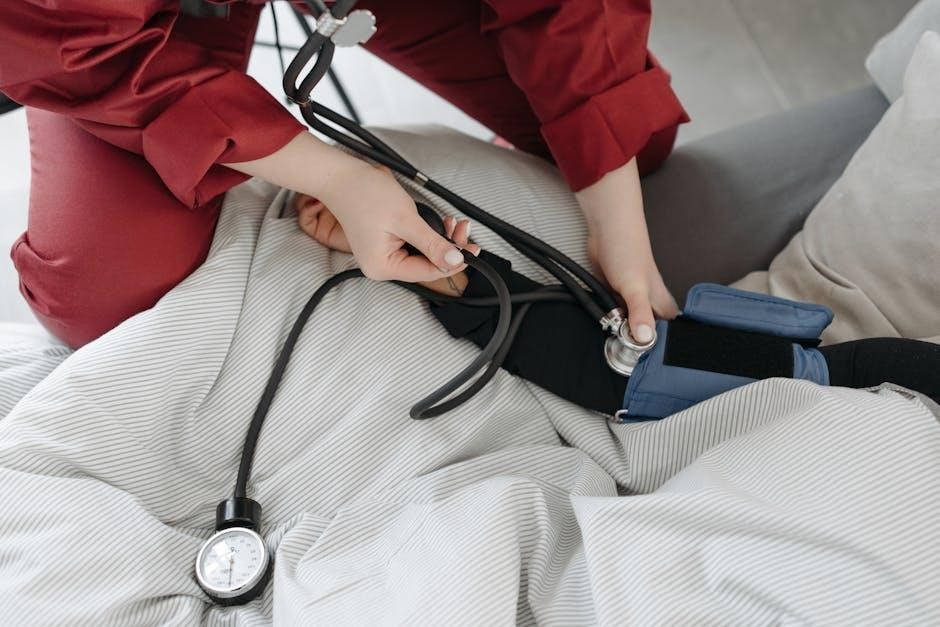
7.2 Continuous Improvement in Assessment Skills
Continuous improvement in head-to-toe assessment skills is essential for nurses to provide high-quality patient care. Regular practice and feedback from mentors enhance proficiency. Staying updated with evidence-based practices and guidelines ensures accurate and effective assessments. Utilizing assessment templates and checklists improves consistency and thoroughness. Reflecting on past assessments and identifying areas for growth fosters professional development. Engaging in continuing education and workshops expands knowledge and refines techniques. Encouraging a culture of continuous learning and improvement ensures nurses remain competent and confident in their assessment abilities, ultimately benefiting patient outcomes and safety in all healthcare settings.